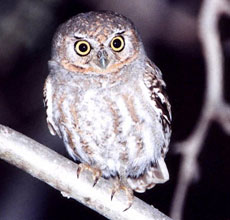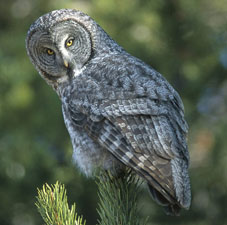Owls
What are owls?

Owls are a bird-type that usually live and hunt alone. Some owls can see well enough in sunlight to hunt by day as well as by night; however, the majority of owl species hunt for food at night.
Most night-hunting owls have keen vision in the dark; however, some have such sensitive hearing that they rely very little on vision. These owls locate and catch mice, voles, and other small mammals in total darkness by listening to the rustling noise the animals make running through the forest.
Owls eat mostly mammals. The larger owls catch rabbits and squirrels, and the smaller ones catch mice, rats, and shrews. Some owls also hunt a few birds and insects; others have been known to take fish from shallow waters. Like hawks, owls tear large prey into pieces when they eat it. If the prey is small enough, they swallow it whole. They later cough up pellets of undigested bones, fur, scales, and feathers.
There are about 162 different species of owls alive today, inhabiting a huge variety of ecological niches, from rainforests to tundra. They are found throughout the tropical, temperate, and subarctic regions of the world and on many oceanic islands.
The smallest owl

The smallest species is the tiny elf owl, measuring about 6 inches (15 cm) long, that lives in South-western United States and generally scarce and declining in Texas and California.
It has yellow eyes and a very short tail. It lacks ear tufts. It is buff-coloured with indistinct dark streaks. Its call is an irregular series of high churp's and chattering notes.
The elf owl can be readily found in desert lowlands and in canyons, especially in oaks and sycamores; it is fairly common in foothills. It is strictly nocturnal and roosts and nests in cavities in saguaros and trees.
The largest owl

The largest species is the great gray owl that lives deep in woods of Canada and Alaska as far north as trees grow. There are an estimated 50,000 Great Grays in North America. Inhabiting coniferous forests of the Northern Hemisphere, they are not migratory but will leave their territories if their food supply runs short. They prefer dense forests (pine, spruce, poplar and larch) with adjacent meadows.
Gray owls grow to about 30 inches (76 cm) long and have a wingspread of 54 to 60 inches (137 to 152 cm).
Their diet consists of voles and other small rodents and birds. Their excellent hearing allows them to detect the movement of rodents.